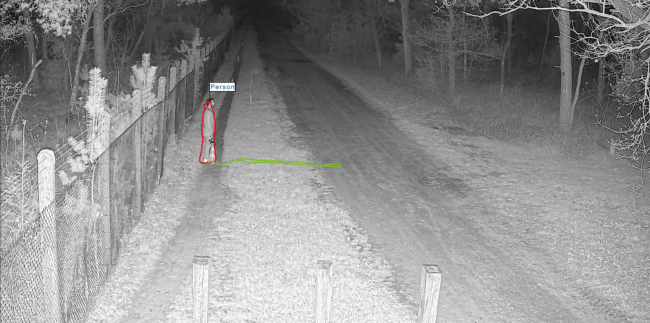
The AI Push to Smart and Speedy Security
How AI-Driven Analytics are Adding Speed and Automation to Infrastructure Perimeter Detection, Deterrence and Response
Threats of theft, vandalism and terrorism are a continual concern for those responsible for the security of the nation’s utilities. Regulations are becoming increasingly stringent, making perimeter security vital to maintaining safety, safeguarding assets, and ensuring business continuity. If critical assets are damaged or disabled, it can have a negative impact on the communities and businesses in the service area and may pose health and safety risks.
For regulated sites, perimeter security is critical to meeting strategic and compliance objectives. For example, guidelines for utilities from the North American Electric Reliability Corporation’s Critical Infrastructure Protection plan (NERC-CIP) state that site owners and operators must be able to detect, assess, and respond to objects approaching a perimeter, with the aim to safeguard the facility. Since threats come in many forms – from attempted perimeter breaches to shooters positioned outside of a facility as well as drones, a layered approach is essential to securing perimeters.
Why Fast, Analytics-Driven Detection is Essential
Advanced detection is an essential component of perimeter security. Staff responsible for site security need to know as soon as possible if there is a risk to the area or assets, so they can respond faster. Video security cameras with built-in artificial intelligence (AI) or video analytics understand what they are seeing to interpret scenes, monitor risks against a threshold and alert people the moment a threat happens.
Cameras with edge-enabled video analytics keep watch over perimeters and alert to intruder approach, line crossing, loitering, fence jump and more. An alarm will trigger if the camera detects a person or vehicle crossing an invisible line in the scene or a person or vehicle entering an area without leaving after a specified time. With recent advancements, analytics can even detect intruders who roll, crawl or hide in tall grass to breach fencing.
Cameras with AI-driven analytics can alert to these conditions while limiting nuisance alarms from wildlife or environmental conditions, including rain, moving foliage and camera shake. Accurate alerts are important for efficiency when considering the time and expense of security operators investigating alarms across multiple locations, including remote, unstaffed sites. AI-based classification aids in filtering out false triggers while providing alerts to actual threats.
Gun and Drone Threats Require Rapid Response
In remote areas, such as at electrical utility substations, attackers seeking to disable critical assets may be able to do so from outside the perimeter with long-range, large-caliber firearms. When there’s live fire at a critical site, security personnel need to act quickly. It is vital to detect events and identify the source as fast as possible.
By integrating gunshot detection technology with an automated video security system, the gunshot detection system can use geospatial-based commands to slew to cue a pan-tilt-zoom (PTZ) camera to verify events. When a gunshot is detected, a nearby moving camera will pan, tilt and zoom to the precise location in less than one second to help security personnel view the source of the gunfire and capture video evidence of the shooter. The camera can also automatically classify and track the shooter, dynamically adjusting the field of view to capture optimal clarity and helping security staff to respond quickly and appropriately.
Drones also pose a danger for utilities with their ability to fly over fencing to breach physical barriers. Operators need a visual perspective to assess these threats and determine whether a drone may be carrying cameras or even explosives.
By integrating radar technology with the video system, radar detection of the drone can trigger the closest ground-mounted security moving camera to pan, tilt, and zoom to the location and begin tracking the drone to help security personnel react accurately.
How Automation Can Be an Effective Deterrence to Damage or Theft
Once an impending or in-progress perimeter breach is detected, automated responses can deter intruders from inflicting damage or stealing valuable assets. AI-driven video analytics can trigger a camera to track an object. With deep-learning AI technology, cameras with edge-enabled analytics can track an object even if it stops moving temporarily to hide from the camera’s view. Cameras with integrated illuminators can also be triggered to turn on white light illumination, shining a bright white light on the intruder. This spotlight follows the intruder as the camera tracks the person’s or vehicle’s movement throughout its field of view.
At the same time, the video analytics can also trigger audio responses if communications capabilities are integrated with the system. Audio messages can play automatically or be initiated remotely when an intruder is detected. Broadcast through a nearby loudspeaker, the message warns the intruder they are under surveillance and that the local authorities have been contacted.
Together, the white light illumination and audio communications are powerful deterrents that may cause the intruder to leave the area before causing damage.
Beyond Detection and Deterrence
Guidelines for high-security sites may require more than solutions to detect and deter threats. For example, NERC-CIP guidelines look for measures to enable the organization to also delay, assess, communicate, and respond to physical threats. Video cameras can serve as key components in solutions that help fulfill NERC-CIP standards, especially cameras that can act as sensors and that can integrate with security platforms in ways that help personnel monitor events, manage security policies and run investigations when perimeter breaches occur.
There are a broad range of technologies for perimeter security solutions to match the equally wide range of requirements from various sites. At the end of the day, intelligence is a key element that provides early warnings and automated triggers for secondary actions.
Jon Carstensen is a Business Development manager for Bosch Security Systems. He has deep experience and diverse background in the utilities segment and has worked with many utilities to solve real-world problems with programs, technologies, and operational improvements in ways that are scalable, sustainable, and provide robust safety and security solutions.